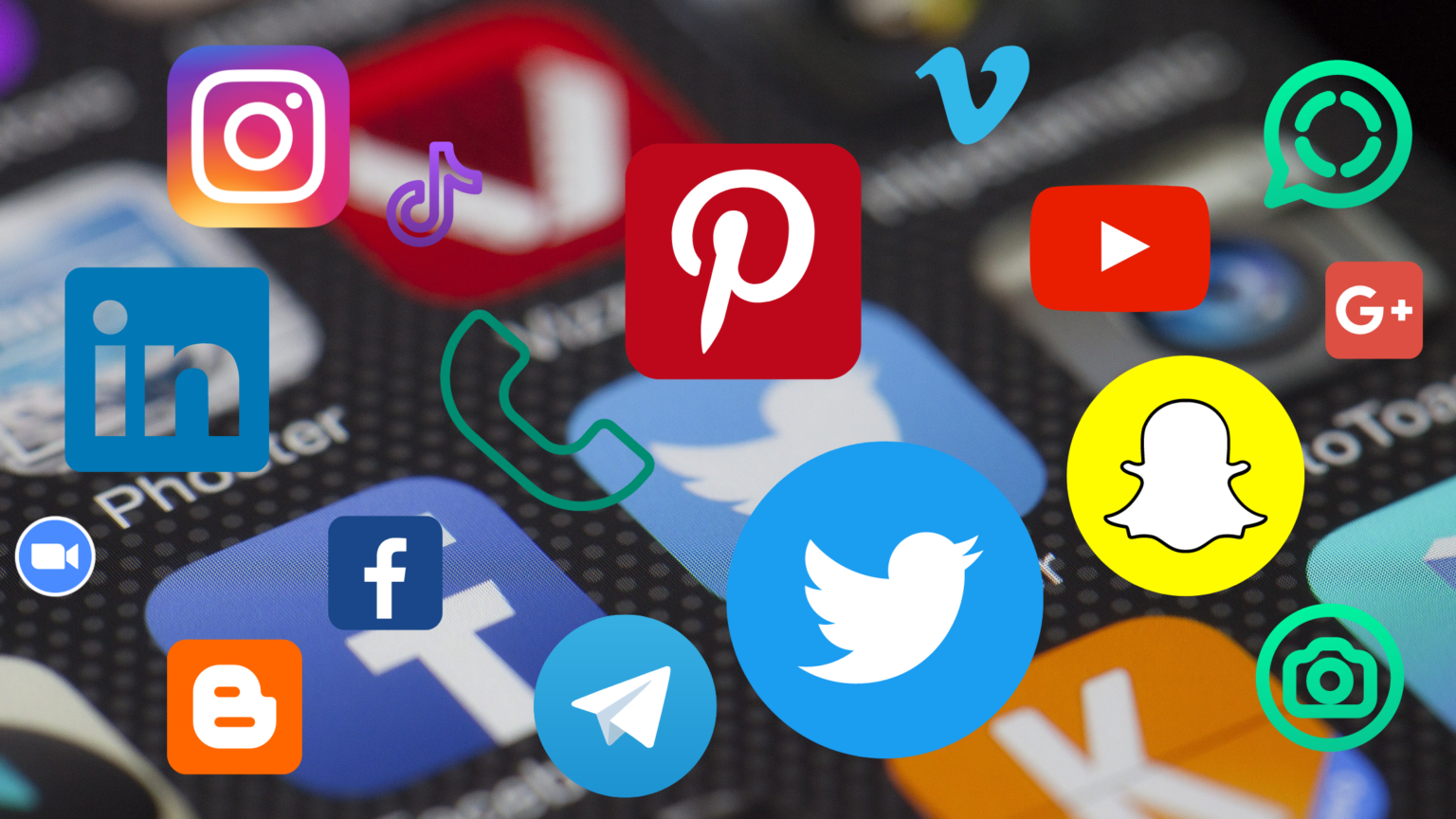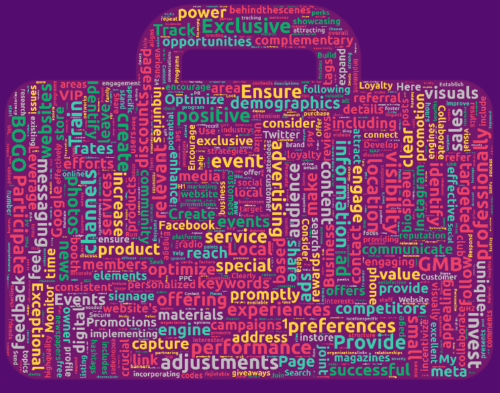How to Make Local Business Successful with cool Marketing Strategies
How to Make Local Business Successful with cool Marketing Strategies – would help business owner or a marketer. For a local business to be successful a planned action plan is very important for marketing.

By Admin
As a small business owner, effective marketing strategies are crucial for attracting and retaining customers. Here are some key strategies to consider: leverage social media platforms like Facebook, Instagram, and Twitter; optimize your website for search engines; collaborate with other local businesses for joint promotions; offer exclusive promotions to incentivize customers; invest in local advertising through newspapers, magazines, or radio; attend local events to connect with potential customers; and provide exceptional customer service to stand out from competitors. These strategies can help make your local business successful by increasing visibility, attracting new customers, and fostering loyalty.
Leverage the power of social media:
Social media platforms like Facebook, Instagram, and Twitter are excellent tools for promoting your business. Create engaging content that showcases your products or services and encourages followers to engage with your brand. Some specific strategies for each platform include:
Facebook:
Create a Facebook Page for your local business and optimize it with relevant information, photos, and contact details. Run targeted Facebook Ads to reach local users based on location, demographics, and interests. Encourage customers to check in, leave reviews, and share their experiences on your Facebook Page. Share engaging and informative content, such as local news, events, promotions, and behind-the-scenes peeks. Join and actively participate in local Facebook Groups relevant to your industry or community.
Instagram:
Set up an Instagram Business Account and ensure your bio includes location details and a link to your website or contact information. Post high-quality photos and videos showcasing your products, services, or local scenery. Use relevant hashtags for your location and industry to increase discoverability. Engage with your audience by responding to comments, liking and sharing user-generated content, and running contests or giveaways. Collaborate with local influencers or partner with other businesses to cross-promote each other.
“The buyer journey is nothing more than a series of questions that must be answered.- IDC”

Twitter:
Create a Twitter profile for your business and optimize it with a clear bio, location details, and a link to your website. Use local hashtags and keywords in your tweets to attract users interested in your area. Engage with local Twitter users by following, retweeting, and replying to their posts. Share timely and relevant updates about your business, such as special offers, events, or new product launches. Participate in local Twitter chats or create your own hashtag to start conversations and engage with the community.
Optimize Your Website for Search Engines:
Enhance your website’s search engine optimization by incorporating pertinent keywords, meta descriptions, and title tags. These elements will increase your website’s visibility on search engine results pages (SERPs), making it easier for potential customers to find you online.
Optimize Your Website for Local Search:
Conduct thorough keyword research to identify relevant local keywords that potential customers may use when searching for products or services in your area. Integrate these keywords naturally into your website’s content, including headings, page titles, meta descriptions, and image alt tags. Consider creating location-specific landing pages or sections on your website to target different areas or neighborhoods within your locality.
Claim and Optimize Your Google My Business Listing:
Secure and verify your business on Google My Business (GMB) to ensure accurate information is displayed in local search results. Complete your GMB profile in its entirety, providing your business name, address, phone number, website URL, business hours, and photos. Encourage customers to leave reviews on your GMB listing, as positive reviews can enhance your visibility and reputation.
Build Local Business Citations:
Establish a consistent online presence by listing your business on reputable local directories, such as Yelp, Yellow Pages, and Bing Places for Business. Ensure that your business name, address, and phone number (NAP) information is accurate and consistent across all directories. Look for opportunities to be listed on industry-specific or local business association websites.
Generate Positive Online Reviews:
Motivate your satisfied customers to leave reviews on platforms like Google, Yelp, Facebook, and industry-specific review sites. Respond promptly and professionally to both positive and negative reviews, demonstrating your commitment to customer satisfaction.
Create Locally-Focused Content:
Develop high-quality content that addresses local topics, events, news, or common questions relevant to your industry and area. Utilize location-specific keywords in your content and consider incorporating local landmarks, events, or businesses to increase relevance.
Implement On-Page SEO Best Practices:
Ensure that your website has a clear and organized structure, facilitating easy crawling and indexing by search engines. Optimize page loading speed, mobile responsiveness, and user experience to enhance overall website performance. Utilize header tags (H1, H2, etc.) to structure your content and improve readability. Build internal links between relevant pages on your website to enhance navigation and improve search engine rankings.
Acquire Local Backlinks:
Seek opportunities to earn backlinks from reputable local websites, such as local news publications, blogs, or community organizations. Engage in local events, sponsor local charities, or collaborate with other businesses to increase your chances of being mentioned and linked to.

Partnering with Local Businesses:
Collaborating with other local businesses presents an excellent opportunity to expand your customer base. Consider the following strategies to enhance your partnership:
Joint Promotions and Cross-Promotion:
- Identify local businesses that offer complementary products or services.
- Develop collaborative promotions that benefit customers of both businesses.
- Utilize social media, email newsletters, and physical materials like flyers for cross-promotion.
- Consider exclusive discounts for customers who engage with both businesses.
Co-Host Events or Workshops:
- Plan and organize events, workshops, or classes together with complementary businesses.
- Choose a theme that aligns with both businesses and appeals to your target audience.
- Share responsibilities and costs, ensuring a successful event.
- Promote the event through social media, email lists, websites, and local event listings.
Collaborative Content Creation:
- Create valuable content together, such as blog posts, videos, or podcasts.
- Combine expertise, insights, or tips from both businesses to offer comprehensive resources.
- Feature each other’s businesses and include backlinks for cross-promotion.
- Leverage your networks to amplify the reach of the content.
Loyalty Programs and Referral Partnerships:
- Establish referral partnerships or loyalty programs with complementary businesses.
- Incentivize customers to refer friends or family to both businesses.
- Offer special rewards or discounts for customers who engage with both businesses.
- With permission, share customer data to enhance personalized marketing and identify cross-selling opportunities.
Collaborate on Local Sponsorships or Charitable Initiatives:
- Identify local events, charities, or community organizations aligned with your businesses’ values.
- Collaborate and pool resources for sponsorships or charitable initiatives.
- Participate in local fundraising events or volunteer together for a positive impact.
- Leverage these collaborations for joint PR and marketing, showcasing your commitment to the local community.
By partnering with other local businesses, you can create mutually beneficial relationships, increase your brand visibility, and reach new customers.
Exclusive Promotions: Boosting Customer Engagement
Exclusive promotions can be a powerful tool to entice customers and encourage them to make purchases or visit your store. Here are some strategies to consider:
Time-Limited Discounts:
- Create a sense of urgency by offering discounts for a limited time or during flash sales.
- Specify a duration for the promotion, such as 24 hours or a weekend.
- Advertise the limited-time offer across various channels, including social media, email newsletters, website banners, and in-store signage.
- Clearly communicate the discount percentage or the amount customers can save to capture their attention.
- Consider providing additional incentives, such as free shipping or a gift with purchase, to enhance the appeal of the promotion.
Buy-One-Get-One (BOGO) Deals:
- Encourage customers to make a purchase by offering buy-one-get-one-free or buy-one-get-one-half-off promotions.
- Highlight the value customers will receive by emphasizing the free or discounted item.
- Clearly communicate the terms and conditions of the promotion, including any product exclusions or limitations.
- Use eye-catching visuals and persuasive messaging to promote the BOGO offer through your marketing channels.
- Consider offering BOGO deals for specific product categories or during special occasions like holidays or anniversaries.
Loyalty Rewards Programs:
- Implement a loyalty program that rewards customers for their repeat business.
- Offer exclusive discounts, freebies, or special perks for members of your loyalty program.
- Assign points or tiers based on customer purchases or engagement with your business.
- Promote the benefits of the loyalty program on your website, in-store, and through targeted email campaigns.
- Personalize the rewards based on customer preferences to make them feel valued and appreciated.
VIP or Insider Clubs:
- Create an exclusive VIP or insider club for your loyal customers.
- Provide members with access to special promotions, early product releases, or behind-the-scenes content.
- Send personalized invitations and communications to club members to make them feel part of an exclusive community.
- Consider hosting special events or private sales for VIP members to enhance the exclusivity of the club.
Referral Programs:
- Encourage your existing customers to refer their friends and family by offering referral incentives.
- Provide discounts, store credits, or freebies to customers who successfully refer new customers.
- Develop a referral tracking system to ensure proper credit and rewards for both the referrer and the new customer.
- Promote the referral program through various channels, including email, social media, and in-store signage.
Social Media Exclusive Offers:
- Utilize your social media platforms to share exclusive promotions or discount codes.
- Encourage customers to follow, like, or share your posts to unlock the exclusive offer.
- Create visually appealing graphics or videos to grab attention and communicate the details of the promotion.
- Monitor engagement and respond promptly to customer inquiries or comments to drive further interaction.
By implementing these strategies, you can create a sense of exclusivity and incentive for your customers, boosting their engagement and ultimately driving sales and store visits.

Invest in local advertising :
Investing in local advertising can expand your reach within your local area and help you connect with a wider audience. To make the most of your efforts, consider the following steps:
Define Your Target Audience:
Clearly identify your target audience based on factors such as demographics, interests, and location. This will help you tailor your advertising efforts effectively.
Local Newspapers and Magazines:
Research local newspapers and magazines that cater to your target audience or focus on topics related to your industry. Contact their advertising departments to discuss advertising options, rates, and available ad formats. To maximize your reach, consider placing ads in both print and digital versions.
Develop Compelling Ad Content:
Create engaging ad content that grabs attention, communicates your value proposition, and includes a strong call to action. Craft your messaging to resonate with your target audience and encourage them to take action.
Monitor Performance:
Track the performance of your newspaper and magazine ads by monitoring response rates and customer inquiries. This will help you gauge the effectiveness of your advertising efforts and make adjustments as needed.
Radio Advertising:
Identify popular local radio stations that attract your target audience. Contact the radio station’s advertising department to discuss available airtime slots, rates, and audience demographics. Create engaging and memorable radio ads within the allocated time, using techniques like jingles, catchy phrases, or testimonials to enhance brand recall. Track the impact of your radio ads through website traffic, phone inquiries, or mentions during customer interactions.
Targeted Digital Ads (PPC Advertising):
Set up targeted digital ad campaigns, such as pay-per-click (PPC) advertising, on platforms like Google Ads, Facebook Ads, or other advertising networks with geo-targeting options. Define your target audience based on location, demographics, and interests. Develop compelling ad copy, headlines, and visuals that capture attention and drive clicks. Monitor and optimize your digital ad campaigns by analyzing key metrics such as click-through rates, conversion rates, and return on investment (ROI).
Coordinate Messaging and Branding:
Ensure consistency across all advertising channels in terms of messaging, branding, and visual identity. Maintain a cohesive message that aligns with your overall marketing strategy. Use consistent visual elements, such as logos, colors, and fonts, to reinforce brand recognition and recall.
Track and Analyze Results:
Implement tracking mechanisms, such as unique phone numbers, URLs, or discount codes, to monitor the performance of your advertising efforts. Analyze the data to determine the effectiveness of each advertising channel and make necessary adjustments. Continuously refine and optimize your advertising campaigns based on the insights gained.
By following these steps and regularly evaluating your advertising strategy, you can effectively invest in local advertising and reach your target audience in a meaningful way.
Participate in Local Events:
Engaging in local events, such as trade shows, fairs, or festivals, presents an opportunity to connect with potential customers and promote your business effectively. Ensure that you have marketing materials, including business cards or flyers, readily available to distribute to attendees.
Research and Select Appropriate Events:
- Identify local events that specifically target your desired audience or relate to your industry.
- Thoroughly research event dates, locations, themes, and attendee demographics to ensure they align with your business objectives.
- Consider factors such as event size, expected attendance, and the reputation of the event organizer.
Prepare Effective Marketing Materials:
- Create professional marketing materials that leave a lasting impression on event attendees.
- Design visually appealing business cards, brochures, flyers, or postcards that showcase your products, services, and contact information.
- Ensure your marketing materials effectively communicate your unique selling points and key messages.
- Maintain consistency in branding elements, such as your logo and color scheme, to establish a recognizable visual identity.
Optimize Your Booth or Display Setup:
- Secure a booth or designated space at the event to showcase your business prominently.
- Strategize the layout and design of your booth or display to attract attention and engage visitors.
- Utilize signage, banners, or backdrops with compelling visuals and clear messaging.
- Arrange your products, samples, or demonstrations in an organized and visually appealing manner.
- Incorporate interactive elements or displays that encourage attendees to interact with your booth.
Engage Attendees Actively:
- Train your staff members to be friendly, knowledgeable, and approachable during the event.
- Initiate conversations with attendees and demonstrate genuine interest in their needs or preferences.
- Prepare an elevator pitch or a concise introduction that highlights the unique value your business offers.
- Engage attendees through product demonstrations, interactive activities, or games.
- Collect contact information from interested attendees to follow up with them after the event.
Provide Incentives and Promotions:
- Offer exclusive event promotions, discounts, or freebies to incentivize attendees to make a purchase or engage further with your business.
- Clearly communicate event-specific offers and benefits through signage or displays.
- Consider running contests or giveaways to generate excitement and attract attendees to your booth.
- Encourage attendees to sign up for your email newsletter or follow your social media accounts for future promotions.
Follow Up After the Event:
- Compile the contact information you gathered during the event.
- Follow up with personalized messages or offers to nurture leads and convert them into customers.
- Send thank-you emails to attendees to express your appreciation for their time and interest.
- Utilize social media platforms to share event highlights, photos, and testimonials from attendees.

Delivering Outstanding Customer Service:
Setting Yourself Apart:
To stand out from your competitors and foster customer loyalty, prioritize exceptional customer service. Train your team to provide outstanding service and respond promptly and professionally to customer inquiries and concerns.
Establishing Trust and Loyalty:
Exceptional customer service creates positive experiences that build trust and loyalty towards your brand. When customers feel valued and well-cared for, they are more likely to return and recommend your business to others.
Harnessing the Power of Word-of-Mouth:
Satisfied customers are inclined to share their positive experiences, leading to valuable word-of-mouth referrals. This can significantly expand your customer base and enhance your reputation within the local community.
Driving Repeat Business:
By consistently providing memorable experiences, you can encourage customers to become repeat patrons. Cultivating long-term relationships increases revenue and customer lifetime value.
Retaining Customers:
Retaining existing customers is more cost-effective than acquiring new ones. Exceptional customer service plays a vital role in customer retention by addressing their needs, resolving issues promptly, and going above and beyond to exceed expectations.
Steps to Delivering Exceptional Customer Service:
Empower and Train Your Staff:
Invest in comprehensive training programs to equip your staff with the skills and knowledge needed to provide exceptional service. Train them in effective communication, problem-solving, and conflict resolution. Encourage them to take ownership of customer issues and make empowered decisions.
Foster a Customer-Centric Culture:
Cultivate a company-wide mindset focused on customer satisfaction. Emphasize the importance of delivering exceptional service and create a supportive work environment that encourages employees to prioritize the customer experience.
Listen and Communicate:
Actively listen to your customers’ needs and concerns. Encourage open and clear communication, both in-person and through various channels. Respond promptly, addressing inquiries or complaints professionally and empathetically.
Personalize the Experience:
Tailor your interactions to each customer, recognizing their preferences and history with your business. Utilize customer relationship management (CRM) systems to capture and track relevant customer information, enabling personalized service and recommendations.
Anticipate and Exceed Expectations:
Strive to surpass customer expectations by anticipating their needs. Offer personalized recommendations, surprise them with unexpected perks or rewards, and proactively address potential issues before they arise.
Seek Continuous Feedback:
Regularly gather customer feedback through surveys, reviews, and other feedback mechanisms. Utilize this feedback to identify areas for improvement and make necessary adjustments to enhance your customer service.
By implementing these strategies and maintaining a strong focus on providing exceptional customer service, you can differentiate your business, foster customer loyalty, and create a positive reputation in your community.
In conclusion, as a small business owner, implementing effective marketing strategies is crucial for the success of your local business. By leveraging the power of social media, optimizing your website for search engines, partnering with other local businesses, offering exclusive promotions, investing in local advertising, attending local events, and providing exceptional customer service, you can attract new customers and retain existing ones. These strategies allow you to increase your brand visibility, engage with your target audience, and differentiate your business from competitors. Remember to evaluate and adjust your marketing efforts based on the specific needs of your business and the preferences of your local market. With a well-rounded marketing approach, your local business can thrive and achieve long-term success.



